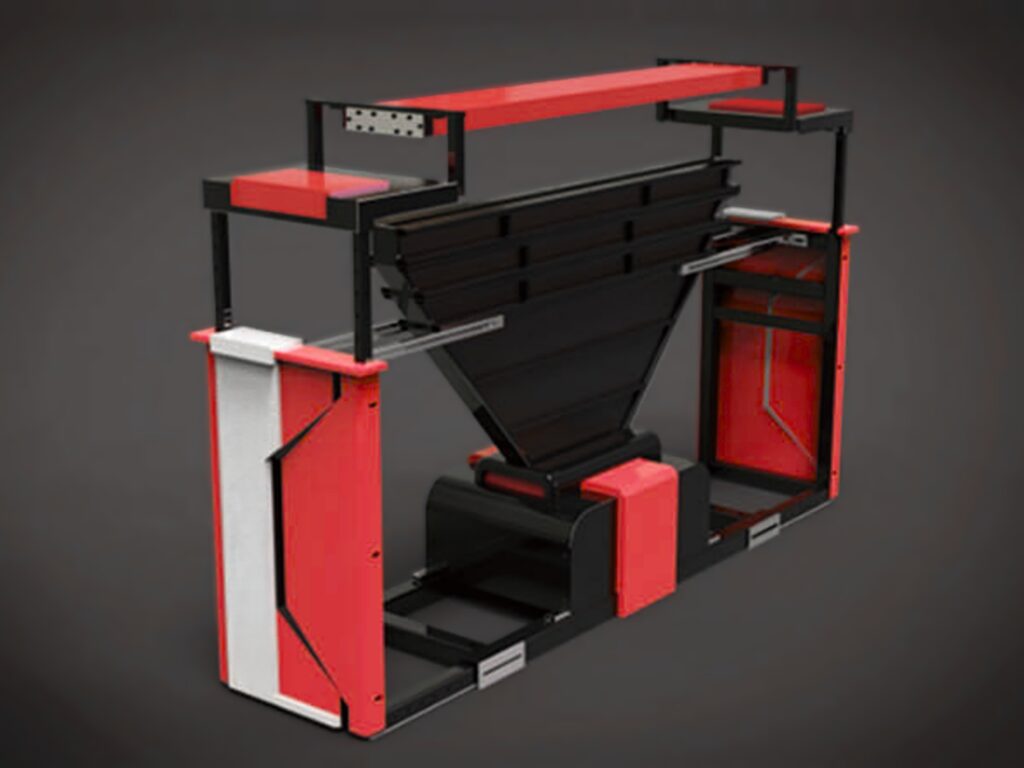Belt Scanner
Home > Products
Belt Scanner
Belt Scanner is a specialized non-destructive diagnostic system used for inspecting and monitoring the internal condition of conveyor belts, particularly steel cord belts. Unlike surface inspections, a belt scanner can detect hidden damages—such as cord breaks, splice faults, internal cuts, holes, and edge wear—that are not visible from the outside. This capability allows for proactive maintenance planning, extending belt life, preventing catastrophic failures, and reducing costly unscheduled downtime while ensuring operational safety.
Main purpose of a belt scanner is to extend the service life of conveyor belts, track the progression of internal damage over time, minimize unplanned stoppages, and maintain safety standards in critical industries. It is especially important in high-capacity, continuous-operation environments where a sudden belt failure could result in significant production and financial losses.

Key features include real-time scanning that can run continuously or on demand, non-contact operation to avoid interfering with belt movement, and the ability to detect various internal damages such as cord breaks, splice separations, edge cuts, and uneven belt thickness. Belt scanners are designed to work with high-speed belts, often up to 10 m/s or more, and can produce automated reports with damage mapping, alerts, and trend analysis. They are also compatible with plant automation systems like SCADA for integrated monitoring.
There are several types of belt scanners suited to different applications. Steel Cord Belt Scanners use magnetic flux leakage (MFL) technology to detect internal cord damage in mining, power, and cement industries. X-ray Belt Scanners offer deep diagnostics for both textile and steel belts, while Ultrasonic Belt Scanners identify layer separations and splice defects. Thickness & Profile Scanners employ laser or ultrasonic sensors to measure wear in abrasive environments. Thermal Imaging Scanners detect hotspots that could indicate friction or fire hazards, and AI/Camera-based Scanners visually identify surface cracks, mistracking, or rips using high-speed cameras and artificial intelligence.
A typical belt scanner system consists of a sensor array (magnetic, ultrasonic, laser, or camera), an electronics box for signal processing, a data logger for storing scans, specialized software for visualization and reporting, and a mounting frame tailored to the conveyor structure. Many systems offer remote monitoring capabilities via cloud or local servers.
For example, a Steel Cord Belt Scanner might handle belt widths from 800 mm to 3200 mm, belt speeds up to 10 m/s, and detect cord breaks smaller than one cord pitch (10–25 mm). It operates in temperatures between –10°C and +60°C, with communication options like Ethernet, Wi-Fi, Modbus, or OPC, and enclosure protection up to IP66.
Installation locations are typically at the head or tail pulley zones, clean straight sections of the return belt, near belt splices, or in pre-tension zones where the belt remains stable for accurate scanning.
Belt scanners are widely used in mining, power generation, cement, steel, ports, and fertilizer industries. The benefits include early detection of damage, prevention of unplanned stoppages, predictive maintenance scheduling, reduced emergency shutdown costs, and improved safety.
Optional add-ons may include edge wear sensors, belt misalignment detectors, rip detection switches, maintenance software integration, and customizable alarm thresholds. The system’s report outputs can include daily, weekly, or monthly belt health reports and detailed damage maps showing cord break locations, enabling maintenance teams to act before a failure occurs.

